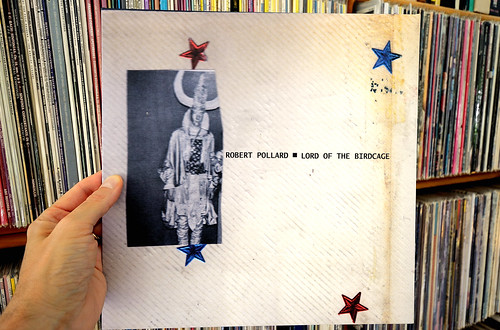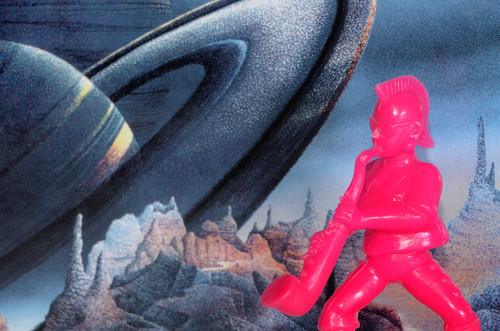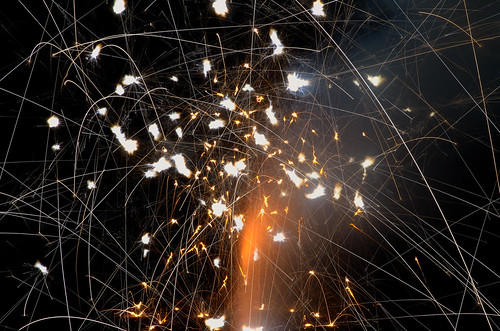
Sun Ra: Dance Of The Living Image: Lost Reel Collection Vol.4 (Transparency 2CD)
In October 1974, the Arkestra traveled to California for an extended sojourn, playing gigs at the Keystone Korner and Off Plaza in San Francisco and the One World Family Center in Berkeley, where they moved into a rented house on Baker Street (Campbell & Trent p.215). They stayed on the West Coast until the end of the year, performing in venues large and small, including an impromptu small group appearance at the San Jose State University Student Union on December 9; at the cavernous Santa Cruz Civic Auditorium on December 11; and a New Year’s Eve show at the Afro-American Historical Society in San Francisco (Id. pp.215, 217). Of these known performances, only the Santa Cruz concert is documented (in a typically grungy-sounding audience recording), although Peter Hinds asserts that a tape exists of the New Year’s gig (Id.). However, in 2009 the Transparency label unearthed a hundred-minute rehearsal tape purportedly recorded in San Francisco in December, 1974 and released it as Dance Of The Living Image, volume four of The Lost Reel Collection. I say “purportedly” because, as usual with Transparency, the documentation is spotty (if not outright wrong) but I guess we have to take some things at face value while trying to correct errors where we can. That’s what I’m here for. Being a rehearsal, it’s not a completely satisfying musical experience, but it gives some insight into Ra’s working methods and reveals a surprisingly bawdy sense of humor. It also corroborates the musicians’ accounts of rigorous rehearsals of material that was never actually played in concert.
The first disc opens with two takes of “Dance Of The Living Image,” the first a mere fragment and the second (also incomplete) misidentified as an “unknown title.” Originally recorded in early 1970 and released on the classic album, Night Of The Purple Moon, this tune was apparently never performed live. That’s too bad, as it’s a groovy modal number driven by Ra’s reedy Rocksichord. But the deceptively simple construction is actually a lot harder to play than it would seem. On the first track, Ra demonstrates the vamp and appropriate scales as the band sets up in the background. But then on the second take, the arrangement keeps breaking down and you can hear Sonny stopping to instruct the band on the tricky ostinato. Newcomer (and Bay Area resident), Damon Choice, is on vibes (probably—see Id., p.217) and he seems to have difficulty getting the hang of it. In fact, the band never really comes together and they eventually give it up. Too bad. The next track is an unknown title (misidentified on the disc as “Sometimes I’m Happy”), possibly a number in the “Discipline” series. The background riffing is similar to “Discipline 27,” but embellished with additional sax and trumpet lines and some jazzy electric guitar from Dave Williams. Another mystery.
Track four (mistitled “Astro Nation) is actually “Sometimes I’m Happy,” a hoary old standard originally recorded in 1962-or-3 and released on The Invisible Shield, which, incidentally, had just come out on the newly rejuvenated Saturn label. While it was performed at The Red Garter in 1970 (and perhaps elsewhere), the song didn’t become a fixture of the Arkestra’s live sets until the ‘80s. And this is a particularly weird take on this ridiculous piece of schmaltz: the horns heave and sigh while Williams hits a dissonant, wah-wah’d clank on the one…Then Ra gets right up to the microphone and mumbles/croons the song in an unexpectedly woozy, almost drunken manner while the band takes it further and further out behind him. Choice runs away on the vibes, Williams turns up the volume and reverb, the horns’ swaying structure on the verge of collapse. Whoah! “Astro Nation” (misidentified as an “unknown title”) is another vocal number, an odd-metered space chant precariously set against a bumping rhumba. Despite its seeming simplicity, it requires several minutes of unsteady repetition before the band starts to gel. Despite this inauspicious beginning, the song quickly became a live staple, at least through the end of the ‘70s.
Disc one concludes with two tracks, wherein two (or three?) previously unknown titles are heard for the first and only time. This twenty-minute sequence is really quite fascinating. Track six shows the band sight-reading a chart, Danny Ray Thompson honking out a slowly repeating bari-sax note, accompanied by off-centered guitar arpeggios. Meanwhile, the horns play a twisty, asymmetrical melody. The sparse, lurching drumming (Jarvis?) makes the band sound twitchy and unbalanced, though the trumpets (Hadi and Ebah) sound confident on the fanfare-like bridge. But just as it seems they’re building up a head of steam, Sonny calls a halt (though Williams and Jarvis continue to play around with their parts). There’s a discussion in the background about what tune they just played, and it sounds like Ra calls it “Opus No.” Hmm. “Let’s play the San Francisco tune,” he says. OK. Track seven (not even listed on the disc!) picks up with the band again reading through a complicated chart. Ra counts aloud in five and stops the band repeatedly to make corrections. The piece sounds something like the previous track, only sped up and with more saxophones, but it’s hard to tell what exactly is going on. After about five minutes, the tape cuts off and picks up on some noodling and talking—until Danny Ray Thompson starts in on a snaky bari-sax riff and the band falls in behind him with what sounds like an already well-rehearsed arrangement (although never performed live or on record)[UPDATE: this composition has been identified as "Sun Procession"--see comments for details]. It’s one of those regal, Pharaohonic themes, richly orchestrated for saxophones, flutes and trumpets, supplemented with Ra’s tinkling electronic keyboard—only Williams’s Superfly guitar antics seem out of place. Interestingly, nobody solos (except for maybe Ra, who never lets up) yet the composition continues to subtly evolve across its ten-minute length before coming to a precise end. Wonderful!
Most of disc two is taken up with “Hard Hearted Hannah,” a Tin Pan Alley hit from 1924, revived here by the Arkestra for (apparently) the first and only time. Actually, it’s more of a jam, led by Ra from the Rocksichord, calling out the chord changes and sometimes providing some (inaudible) instructions. Unfortunately, the twenty-two minute instrumental version never really goes anywhere and Jarvis’s jittery drumming fails to provide a satisfactory groove (he sounds bored, frankly). Another attempt is made, only this time with vocals, but it’s impossible to hear. Then the tape cuts and Ra has now enlisted the entire Arkestra into singing the full lyrics about “the vamp from Savannah, G.A.”—and he gets a big kick out of it (you can hear him cracking up in the background). Sonny comps away while Choice does a Lionel Hampton thing on the vibes. It’s not really happening, but you can tell they’re having fun. Tthe band can hardly believe it when Ra suggests they play it at the gig! (I don’t think they ever did.) The tape cuts in again on more shenanigans: riotous laughter and a song about…farting! “When you eat, don’t eat too fast or you’ll make music with your ass—passin’ gas!” Well, it’s good to know it wasn’t always super-serious Astrometaphysics 24/7 with Ra. Hilarious!
Continuing the old-timey, pre-War vibe, Duke Ellington’s “Sophisticated Lady” follows. During this period, Ra was trying to integrate historical material into the Arkestra’s repertoire, but it’s unclear whether this particular tune had entered into the set at this point. The band sounds like they’re familiar with the arrangement, but Sonny periodically stops to lecture them on the finer points of the rhythmic feel required. Hadi takes an exquisite solo, punctuated with daring, high-register squeals, followed by Gilmore, who is, unfortunately, way off-mic; nevertheless, it is typically brilliant. Finally, the rehearsal concludes with something that is definitely not “Watusi,” despite what the liner notes say. Another unknown composition, the Arkestra struggles with the intricately interlocking melodies. “Are you playing the two or the one?” Ra asks. After some indecipherable discussion, the band tentatively starts again. The effect is hypnotic but the band sounds completely unsure of itself. Then Gilmore and Davis trade licks while Allen plays a long-toned counter-melody on flute, offering further possibilities—but, sadly, the tape cuts off. Oh well—there goes another lost Sun Ra composition.
Like others in the series, Volume 4 of the Lost Reel Collection is for hardcore Sun Ra fanatics only. Being a rehearsal, nothing here really coheres musically (with the exception of the “hidden” track seven and the absurdly amusing “Passin’ Gas”). However, all the previously unknown titles are interesting in their own right, even if incomplete or badly played. Well, for me, the whole thing is essential listening—if only to peek behind the veil, to hear the master at work. Good stuff.








